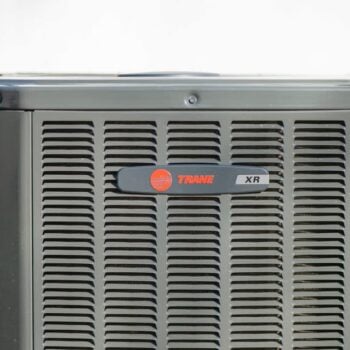
- On April 20, 2021
Updated Dec 15, 2021
Keeping your home cool and comfortable is a little harder here in Arizona than it is in most other parts of the world. As summer temperatures regularly rise over 100 Fahrenheit, some people feel like they’re choosing the lesser of two evils between a hot home and expensive utility bills.
With summer fast approaching, Phoenix residents are fully prepared for the searing summer heat that their corner of the country is so well known for. However, is your budget ready for the big change?
With AC costs making up the bulk of any household’s monthly energy expenses, your energy budget is about to skyrocket alongside the heat as your AC system struggles to keep your house cool and comfortable.
Fortunately, by implementing the steps detailed below, you can still mitigate the blazing heat’s impact on your wallet and save some serious cash over the coming months. Continue reading to see how to decrease operating costs for your air conditioning needs.
How to Save Electricity with Air Conditioner
Use the following tips to discover how to save money on air conditioning.
1. Install a Programmable Thermostat
Programmable thermostats help automate your home’s heating and cooling. They can turn off your HVAC system during working or sleeping hours, so you’re not wasting energy making your home comfortable when no one’s there or awake.
Updating your system to utilize a programmable thermostat will save you money on both your monthly utility bill and on completely upgrading your home’s HVAC system. In recent years, programmable thermostats have become easier than ever to install and use, with many giving you the ability to control your home’s temperature or check energy usage through your smartphone.
Learning how to master your air conditioner settings is the single biggest step you can take to save money throughout the year. For example, using the “auto” setting instead of the “on” setting could save over $20 each month by running the fanless.
Smart thermostats allow you to build out detailed routines that maximize efficiency. Since many of these types of thermostats also have smartphone apps, you can also control your thermostat settings from just about anywhere. This makes it easy to avoid heating an empty house since you can turn your thermostat up when you leave, then get the home cool again before you return home.
How Do You Set Your Thermostat to Save Energy?
The key to finding the right setting for a thermostat in any home is remembering that the less the difference is between the temperature set on the thermostat and the ambient temperature outdoors, the better.
This means you’ll likely need different programming plans for both the warmer summer and cool winter months. In the winter, setting your thermostat to 68 degrees Fahrenheit when you’re home and awake is the most efficient way to keep your home comfortable.
During the summer months, it’s recommended that setting your thermostat to 78 degrees Fahrenheit provides the best balance between comfort and efficiency.
These are good base settings to work with throughout the seasons, and just making these changes could save you a considerable amount of cash on your monthly energy bill in Phoenix.
However, to make your savings even more noticeable, the program further changes your thermostat based on when you expect to be out of the house or asleep.
2. Better Insulate & Weatherize Your Home
Insulating and weatherizing your home will help keep temperatures inside your home lower during the summer months and higher during winter. So, when you switch on your air conditioner during periods of extreme Phoenix heat, the cool air won’t slowly leak out of your home through small cracks. And when you decide to heat your home on a cold winter morning, the heat won’t escape through uninsulated attics, ceilings, or walls.
Since the conditioned air stays in your home, your HVAC will operate efficiently. It won’t need to stay on for as long, and when it does turn on, it won’t need to kick it into overdrive to fight against surging or dropping interior temperatures.
3. Upgrade Your HVAC System
The biggest step you can take is to replace an old, outdated central air unit. This is a big project but could mean a huge difference in the energy costs you see moving forward. Especially if your current unit is over a decade old.
An investment of $3,000 (average cost of HVAC units) on a new unit with a SEER of 14.5 or above is expected to save households a minimum of $700 annually, which means the upgrade pays for itself within five years and you get cooler, cleaner air for less money per month.
Modern HVAC units are far more energy-efficient, integrate into smart home systems, and are intuitive to use. While there can be an upfront cost to replacing your old HVAC system, you’ll quickly find savings through your energy bill even if you decide to finance the purchase.
Furthermore, many federal, state, and local government rebate and subsidy programs can help reduce the upfront cost. This means you may find yourself with a surprisingly inexpensive installation bill.
Also, make sure your air conditioning unit is the right size for your house. To function optimally, air conditioning units should be sized correctly for the space they are cooling. Too small of a unit and it’ll have to run constantly to try to keep up. Too big and it’ll use more energy than is needed to cool your home.
4. Check AC Air Filters
Your HVAC system’s air filters help capture dirt, dust, and other debris that tumbles through your ducts. If the filters become clogged, it can make your HVAC system work harder to make your home cooler.
So, every one or two months, make sure to check and clean your HVAC system’s air filters. If they’re dirty, give them a quick rinse, if reusable, then let them dry completely before returning them to their duties. Or replace them with new disposable ones.
This is simple, free, and improves your home’s interior air quality, too.
If you have hairy pets, kids, allergies, or respiratory problems, you may want to change your filter as often as every month. In addition to hurting air quality, dirty filters reduce airflow and make your AC work harder.
5. Conduct Annual HVAC Maintenance
Taking care of your air conditioning unit is also a must if you’re really looking to keep the impact of summer on your wallet as light as possible.
To get the most savings as possible, ensure you’re putting in the necessary year-round work to keep your unit running smoothly. This means completing simple tasks such as outdoor cleanups and changing your air filters as well as scheduling regular inspections and maintenance from your HVAC repair company.
6. Make Good Use of Fans
If you use a fan, you’ll be able to stay comfortable when it’s a few degrees higher in your house. In other words, you’ll be able to leave your thermostat set for a higher temperature and place less of a strain on your air conditioner.
Ceiling fans and other fans can make a room feel several degrees cooler by generating a little bit of wind chill. If your home doesn’t have fans in the rooms, you can add inexpensive options to the places you spend the most time.
For example, you can put a fan by your bed, near your favorite seat, and next to your desk. Get fans you plan on keeping for years, and there is a good chance they’ll eventually pay for themselves by reducing your utility bills.
Just remember that fans don’t actually make rooms any cooler. They only make people more comfortable by generating wind. There’s absolutely no point in running a fan when no one is in the room, so only turn them on when you need them. Running fans in an empty room will waste energy and raise your utility bills, which defeats the purpose of using them.
Ceiling fans can make you feel like it is cooler in the house than it actually is. Just set them to blow air downward in the summer and switch them to move the air upwards during winter.
7. Open Vents Throughout the House
There’s a very good reason why your air conditioning system was designed the way it is. Keeping all the vents open can help the system move air more efficiently. Shutting some of your home’s vents can disrupt the balance – suffocating the system and making it work harder to cool your house.
What Temperature Should I Set My Air Conditioner at To Save Money?
For each degree you raise your thermostat, you can expect to save between five and 10 percent on your upcoming energy bill. Leaving your thermostat set to 78 degrees has been found to provide the best balance of coolness to expense in summer weather. Of course, this may not be as cool as you’d like, but using ceiling fans or other plug-in fans can make up the difference with ease.
How to Create a More Energy-Efficient Home
Energy efficiency is more than just a slogan to feel good about. Making your home more energy-efficient can save you money in the short and long term. When you use less energy or make the energy you use more impactful, you’ll quickly see your monthly energy bills become less expensive. That helps keep the outdoors and your wallet full of green.
There are a couple of ways to save energy. The first is to update your abode with modern appliances, smart home systems, and energy-efficient components. While this can seem like a significant ding to your pocketbook, you’ll find that sometimes replacing the little things can add up to considerable energy and cost savings.
1. Buy Energy Star-certified Appliances
The federal Energy Star program points the way to energy-efficient household items ranging from televisions to furnaces, plus from windows to central air conditioners.
Buying energy-efficient appliances are easier than ever. When you’re shopping in-person and online, you’ll see both the initial cost of the new unit and the annual operating cost. This makes it extremely simple to compare which new appliances will save you money on your energy bill.
When you’re browsing the appliance selection, you’ll also see something called Energy Star certification. This indicates the product operates more efficiently compared to non-certified appliances. This increase in efficiency can vary based on the appliance, though, so you may need to do some additional research on that specific product before pulling out your credit card.
2. Replace Your Light Bulbs
Energy-efficient lightbulbs, such as halogen incandescents, compact fluorescent lamps (CFLs), and light-emitting diodes (LEDs), offer the following benefits over conventional incandescents: They typically consume 25 to 80 percent less energy than conventional incandescent bulbs, saving you money. Can last three to twenty-five times longer.
It seems simple, but replacing your old light bulbs with energy-efficient ones will help you save energy. New bulbs can last for years and use less energy while still providing the same amount of light as your old bulbs. This upgrade doesn’t cost a whole lot and is quick to enact.
3. Light Your Home Naturally
Phoenix residents know that we get some great natural light. If you keep the shades drawn, you can let natural light into your home and keep your living areas well lit. This means you don’t need to turn on a light until you absolutely need it.
Additionally, if you find your home is too hot, you can also close your curtains or shades to block out the sun’s heat. These simple actions give you less reason to turn on your lights or your A/C.
If you can find a way to block some of those rays, you’ll reduce the temperature in your home. You can do this by planting trees in strategic places on your property where they’ll provide a lot of shade for your home.
4. Keep Your AC On While at Work
It’s been found that AC units work at their most efficient levels when they’ve been running steadily for long periods of time. Therefore, turning off the AC or letting it cycle on and off while you’re away should be avoided.
Instead, program your thermostat at a higher temperature when you know you’ll be away, and then have it cool the house right before you head home to get the cool air you want with maximum efficiency.
However, there’s no point in cooling down an empty building. So if you are going out of town, turn the system way up or off altogether.
How Much Energy Can You Save?
By keeping your thermostat at reasonable levels and setting your thermostat seven to 10 degrees warmer or cooler for 8 hours each day, you could save as much as 10 percent on your annual energy bill.
According to the official Energy Star website, this often means savings of around $180 for the average household in the United States each year, at an average of $15 each month.
5. Upgrade Your Windows to Multi-Pane
In addition to blocking light through your windows, you can upgrade the windows themselves. If your windows are old, damaged, or drafty, they’re making your home lose its temperature a lot faster than it should.
New windows are specifically designed to preserve the temperature of your home and increase efficiency. If you’ve been putting off buying new windows, it might be worth making the purchase now, so you can start reducing air conditioning costs and decrease the cost of your energy bills.
6. Schedule Tasks that Produce Heat or Moisture
Some of your household tasks create extra heat and moisture. For example, cooking, running the dishwasher, and doing laundry can all add extra heat to your home. If you can do these things in the morning or evening when the temperature isn’t so high, your air conditioner won’t have to work as hard to keep up.
Furthermore, local energy companies often have “off-peak hours.”
Click here to learn about SRP’s off-peak hours.
7. Use Your Microwave Instead of the Oven
Instead of using the oven, use the microwave. Microwaves use 30% less energy than your regular oven. It’s easy to cook with microwaves (there are lots of great microwave cooking recipes!) and they don’t generate all of the heat your oven does.
Contact Howard Air & Plumbing With All of Your Heating & Cooling Questions
By taking these steps, you’re ensuring your HVAC operation is efficient and that it’s able to deliver cool air throughout your home without a hassle. By reducing strain on the system, you’re reducing the amount of energy your AC uses, which in turn means you pay less on your monthly electricity bill.
Howard Air & Plumbing is here for residents of Phoenix and the surrounding area. We’ve helped our customers keep their homes comfortable for over 40 years, and we’ve done that by valuing service, integrity, and hard work above all else.
We’d be more than happy to talk about your home’s current HVAC system to see how we can help make it more efficient. That may mean setting up a preventative maintenance schedule, or it could mean replacing your old energy-guzzling unit with a more efficient model.
See also:
Ways to Cut Cooling Costs for Your Business During Summer


















0 Comments